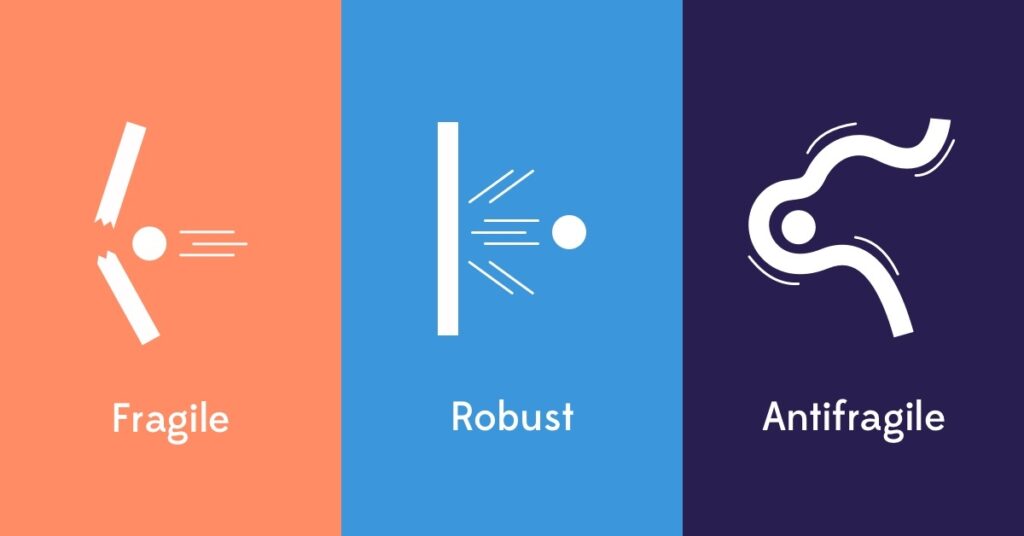
Last week, I promised to write about what thoughtful and concerned citizens can do to confront the chaos and damage our president’s actions have caused in only three short months.
The first thing is to acknowledge that Trump is, in fact, our president. More than half of the Americans who voted last November chose him over Harris. Whether you like that result or not, you can’t buy into our system of government and also say: “He’s not my president.” A loyal opposition works with the reality that it’s got, while trying its best to turn today’s misadventures into tomorrow’s possibilities.
That better future continues by admitting that through either choice or neglect, all Americans own—in the sense of “having responsibility for”—the messes that we’re in today. However much the child in us wishes otherwise, it’s not for some other mommy or daddy to clean up.
That’s because anyone who has been paying attention, even once in awhile, could have seen much of this coming and done more to stop it before it got this far. After all, Trump has never stopped talking about his priorities, not even once! And if we needed it in writing, Project 2025 turned his wish-list into a widely-disseminated plan. It was just easier to say to ourselves: “that can never happen here,” while ignoring the millions of Americans who were hoping that it would, and the millions more who just wanted some alternative (any alternative) to a grandiose version of senility.
Marching further along, we can keep deploring how Trump is trying to secure the future but not (I think) some of the necessary changes that he also wants to make, indeed that millions of our neighbors feel are necessary too
Yes, it’s offensive watching a Family Strongman joyfully bully weaker parties (states like Canada, leaders like Zelensky, universities like Columbia) while extorting “whatever I can get” (as he’s said) in order to become richer and more indispensable himself. But, at the very same time, is he (along with the millions who voted for him) wrong about the drift of our universities towards “one correct point of view,” the need for America to fortify its soft power abroad “by also putting a fist in its velvet glove,” or how too many other nations have taken unfair advantage of our so-called “free trade” policies?
In other words, if we truly want to turn today’s lemon of a regime into tomorrow’s lemonade, we’ll be more likely to succeed by OWNING mistakes that continue to give Trump credibility with his non-MAGA base (like all those farmers on the brink of insolvency who still want to give his trade policies a chance), while SHOWING that we’re big enough to admit “where we got it wrong” before proposing better ways (than Trump’s vindictiveness, extortion and chaos) to fix some long, festering problems.
In other words, if Biden is the thesis and Trump the antithesis in an over-simplified hypothetical, the future will belong to those who admit the errors and find the truths in both administrations as we pursue a new way forward—or kind of synthesis.
I explored a variation on this theme in a pandemic post called “Higher Winds Are Coming,” at a time that’s (unfortunately) not that dissimilar to the one we’re in today. Confronting contagion, Trump and my trepidation about both, I recounted how I was trying to foster a mindset that was more like the one outlined in “Antifragile: Things That Gain from Disorder,” a book from 10 years before by Nassim Nicholas Taleb. Instead of merely being defensive when confronting what feels like danger or chaos, Taleb urged us to play offense by using our agency to gain strength from what’s threatening us or our world view.
This is how Taleb introduces that proposal.
Some things [actually] benefit from shocks; they thrive and grow when exposed to volatility, randomness, disorder, and stressors and love adventure, risk, and uncertainty. Yet, in spite of the ubiquity of the phenomenon, there is no word for the exact opposite of fragile [which fears, to the point of paralysis, both risk and uncertainty]. Let us call it antifragile. Antifragility is beyond resilience or robustness. The resilient resists shocks and stays the same; the antifragile gets better.
Acknowledging “the truth” in the position of someone you oppose, and then incorporating “the strength” of some of those insights into your own position, is (I think) much of what Taleb is talking about.
Doing so also robs, say the Family Strongman, of his ability to claim that only he sees “what’s really been going on” because none of his adversaries can admit, let alone agree with him about it.
The following graphic illustrates how the antifragile perspective incorporates some of the strength (or neutralizes some of the harm) of the surrounding chaos in one’s actions going forward.

What follows are 3 instances where some of the observers I admire most are trying to incorporate the strength in certain of Trump’s positions into their own, antifragile perspectives.
1. Trump’s Savaging of American Foreign Policy
My eyes don’t well up when I look at social media clips of compassionate pets, but it’s easy for me to get there when watching a short video of something like this [Ukrainians kneeling at roadsides to honor the passing of their war dead.] So I began the current Trump administration hanging onto every word he tossed around about Ukraine because I feared that America was about to abandon a brave nation on the frontline of a war (that’s also our war) against barbarity.
Unfortunately, my turmoil about this would have found a better outlet than worry if I’d spent more time examining what’s accurate in Trump’s views about this war and the role the U.S. has been playing in it.
Trump is right about Europe’s free-loading since the Cold War ended, and that we should have insisted from the start that every European country (except maybe Moldova and Georgia) play bigger military and financial roles in the defense of their own territory. Trump is also right that Biden’s foreign policy was embarrassingly weak-kneed–almost to the point of encouraging Russia–since Putin quickly learned we were never there to help the Ukrainians win, only to maintain a dehumanizing form of stalemate. So Trump’s saying “Too many lives have been lost [that didn’t have to be lost because of the last administration’s weakness]” also happens to be true.
Of course, none of Trump’s “truths” justify our abandoning Ukraine to Russian domination now, nor our wider retreat from projecting “soft” and “hard” power elsewhere, as the leader of a world-order the U.S. itself was instrumental in shaping. But admitting them alters (for the better) our foreign policies going forward: as in, building partnerships where the burdens of war are shared more equally and never entering a conflict like this in the first place if you’re not prepared to win because of the annihilating consequences for those who are doing the actual fighting.
Bret Stephens, a conservative, former-Republican columnist interviewed in the Times on Thursday indicated that his final “turning point” against Trump was the humiliation of President Zelensky in the Oval Office (“the most incredible kind of discourtesy”), a display that further emboldened Putin “to press the war harder” while revealing “a combination of malice and idiocy almost unique in American history.” Notwithstanding these damnations, Stephens went on to admit that:
those of us who are critics of Trump, who find him at some level vomitous, are better critics when we concede from time to time that he has accomplished something. That not everything is dreadful or idiotic. You have to keep your brain on. And I think that [turning it off]’s the danger for a lot of Trump critics….
Walter Russell Mead, an historian and a columnist at the Wall street Journal has also been more rigorous than most at seeing the valid points Trump has been making (instead of just those he’s been missing), something he did again on Tuesday:
Many critics of Team Trump’s approach bemoan what they see as the collapse of American soft power {like USAID, Voice of America radio, calling out dictators]. Our core advantage against powers like China and Russia, they argue, is our network of alliances, and these alliances depend on America’s reputation for rules-based, pro-democracy and free-trade policies. To lose that reputation through shortsighted, rash actions is to throw away vital assets that took decades of diplomacy to acquire.
They have a point, but so does Mr. Trump. Iron fists work better when sheathed in velvet gloves, but nothing is more useless than a velvet glove without an iron fist. America’s failure to match the growth in Chinese and Russian hard power under President Barack Obama eroded the foundations of world peace even as Mr. Obama electrified European audiences with inspiring speeches. The comforting illusion that soft power is an effective substitute for hard power contributed materially to the generational failures in Western security policy that left the world system so dangerously and so unnecessarily exposed to the ambitions of the revisionists.
Stephens and Mead both recognize that however alarming (or brain extinguishing) Trump’s statecraft might be sometimes, it is even more wrong-headed to offer perspectives on the future that deny what Trump gets right, “truths” that just might keep fewer supporters in his camp once they’re embraced by more of those who are outside of it.
2. Trump’s Vendetta Against Universities
Bret Stephens also challenged this vendetta in the course of his interview, noting how Trump “latched onto the issue of antisemitism on campus, which is real and which I think the left was in denial about to a great extent,” before vehemently objecting to how the president has:
turned a legitimate grievance — and specifically Jewish grievance — into a tool to undermine and potentially destroy a value, which I think is [also] a core Jewish value, which is the value of debate, dissent, reason, inquiry, criticism and so on….
[S]o there is a side of the Jewish population that’s sort of cheering Trump because he seems to have the same enemies, or many of the same enemies, that we do [Stephens is Jewish]. But the methods he’s using to oppose those enemies, we ought to fear.
Lawrence Summers, the former Treasury secretary and Harvard president who also happens to be Jewish, said the following in a Times op-ed on April 3, before Harvard opposed Trump’s threat to block billions of dollars in research funds if the university failed to yield to his demands on “oversight.” Summers is unwavering in opposing Trump’s extortionist attack, but not before acknowledging some uncomfortable truths that the president also believes.
As in most confrontations, the merits in this one are far from one-sided. Critics of elite universities, including Harvard, where I am a professor, are right that they continue to tolerate antisemitism in their midst in a way that would be inconceivable with any other form of prejudice, that they have elevated identity over excellence in the selection of students and faculty, that they lack diversity of perspective, and that they have repeatedly failed to impose discipline and maintain order.
And universities’ insistence that they be entirely left alone by their federal funders rings hollow in light of the enthusiasm with which they greeted micromanagement when they approved of the outcome, such as threats from Washington to withhold funds unless men’s and women’s athletic budgets were equalized.
But the Trump administration is not acting in good faith in its purported antisemitism concerns, nor is it following the law in its approach to universities.
President Trump offered praise to a white-supremacist rally that included chants of ‘Jews will not replace us,’ publicly dined with Holocaust deniers, made common cause with Germany’s Nazi-descendant AfD party and invoked tropes about wealthy Jews. The true motivation behind his attack on universities is suggested by Vice President JD Vance’s declaration that the ‘universities are the enemy.’ Shakedown is the administration’s strategy as it has gone after law firms, federal judges, legislators who disagree with its edicts and traditionally independent arms of the government. [internal links disabled]
So of course, it’s shameful that the Family Strongman is using antisemitism as a pretext to stifle unwelcome dissent from the young and the restless before it even rises (like a tide) against him. But that doesn’t mean our greatest universities should get a “pass” when it comes to the selective intolerances they have fostered against anyone who deviates from “acceptable doctrine”—about Gaza or otherwise. An antifragile perspective about our universities needs to insist that they give themselves a full, internal housecleaning while Trump’s destabalizing assault is still fresh in their minds.
3. Two Things About Tariffs
The real “goods” and “bads” regarding Trump’s tariff barrage have gotten lost in the shuffle of the chaos of their announcement, their “on-again/off-again” nature, and the conflicting voices in the White House that have been “explaining” them to us. The speakers and the listeners all seem confused.
This story should have begun with an explanation about why tariffs are needed in the first place, and why this is a critical objective of the Trump’administration, particularly because of the risks of higher costs and damaged savings that nearly everyone has been either expecting or already experiencing. Moreover, this global tariff initiative was launched at a time when many Americans’ daily experience of their economy finally seemed to be improving in the three months following the election.
I believe that in light of our country’s need to re-shore certain essential manufacturing (the soup-to-nuts processing of rare earth metals comes to mind), some level of across-the-board tariffs and a re-calibrating with China are, in fact, necessary. (You might check out this excellent discussion [via a paywall-free link] between economist Oren Cass—a regular voice on this page—and Ross Duothat of the New York Times for Cass’s explanation). So once again, Trump has managed to conflate a policy move that’s sound at its core with horrible execution and even worse statements about his motivations.
Some of the worst damage may have been caused by how our Family Strongman managed to make a predatory China look good by comparison to nearly every other nation that has been impacted. Here’s Yaroslav Trofimov writing in the Journal last weekend:
Beijing’s message amid this crisis is that China represents the best hope for ‘win-win cooperation’ and global prosperity, in contrast with what the Chinese foreign ministry calls America’s ‘unilateral bullying practice.’ Countries around the world are skeptical of the Chinese Communist Party’s intentions, but the language of respectful cooperation is far more appealing than Washington’s demands to pay tribute—as when Trump said this week that ‘countries are calling us up, kissing my ass’ to make a deal on tariffs.
Once again, he’s been sabotaging a perfectly good instinct with Godfather-inspired messaging. Among other things, an inherently more robust trade initiative would involve implementing more tailored protectionism in a far more respectful and collaborative way.
The bottom-line in this discussion is this. If the president’s critics want to succeed (and I thing we do), they can’t aim to throw the entire Trump-baby out with his fetid bathwater. He gets it right sometimes, and a legion of his supporters and “persuadables” instinctively sense the accuracy of his judgments when it comes to matters like foreign policy, universities and tariffs. As a result, his judgments, when valid, need to be built into any opposition’s plan for America.
A failure to do so will likely cause even the best among them to fail.
+ + +
What I’d call “A Gate to the Future” (as seen up top) is care of @miguelmarquezoutside. I’ll see you next week.
This post was adapted from my April 20, 2025 newsletter. Newsletters are delivered to subscribers’ in-boxes every Sunday morning, and sometimes I post the content from one of them here, in lightly edited form. You can subscribe by leaving your email address in the column to the right.





